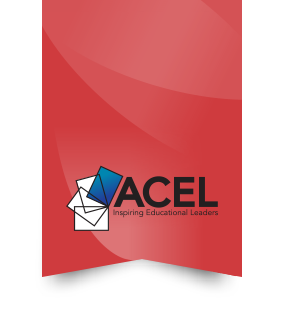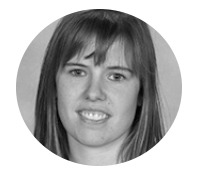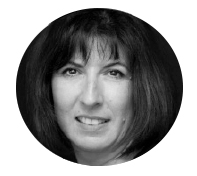
New Voice Scholars: Perspectives
Changing the Structure of Schools
“The New Voice Scholarship is a fabulous opportunity for skilled and motivated educators to be recognised by their peers. ACEL is committed to giving-back to the profession, through the provision of world-class learning opportunities for up-and-coming leaders, and we are thrilled to welcome the 2016 Scholarship winners into the ACEL network. There is also opportunity to have their voices heard through ACEL Publications and at events. All winners of the New Voice Scholarships were invited to write for the special issues of Perspectives, where they consider the following topic, with no limitations or directions, If you were able to transform education (given a metaphorical magic wand), what would you do? These perspectives are, like our New Voice Scholars contexts, diverse and inspiring. I hope these articles challenge and inspire you to reflect further.”
Aasha Murthy, CEO ACEL
Laura Searle
Teacher
Glenelg Primary School, Glenelg East, SA

Changing the Structure of Schools
When I was asked to come up with a ‘big idea’ that could transform education, I was quite overwhelmed! No budget? No restrictions? It was such a broad platform to start with, I wasn’t entirely sure where to begin.
Currently, I am in my fourth year of teaching, and although I feel like I have had lots of experience teaching thus far, I find that I don’t have all the answers to the questions, and at times, I don’t have the experience in education to even have the questions! As I am a full time classroom teacher, I began to think about what would be needed, or should change, to give children the best opportunities for success, and similarly, what changes could be made that would allow me to become a better educator. The discussion of whether class sizes have an effect on the education of children continues to be a hot topic amongst fellow teachers. A reduction in class sizes, particularly for beginner teachers, would be a transformation I would choose to make in education.
Firstly, the demand on teachers in a daily capacity is huge. It’s a hands-on job that requires them to be constantly available to answer questions, solve playground problems, tie shoelaces, clean up spaces, reply to emails, attend meetings, plan programs, mark tests, go on excursions, and oh…educate the children! Demands on teachers continue; both curriculum requirements and expectations of Department of Education and Child Development (DECD) and parents to be adequately met, not forgetting the constant negotiation with 5 year olds! This, coupled with being a beginning teacher, can be overwhelming, and can have big impacts on the content that is produced. By limiting numbers in the classroom to below the average of what schools have now (approximate average of 26), teachers will be given an opportunity to hone skills, develop sound programs and build trust with child and family.
Secondly, capabilities of children in the 21st century continue to be diverse and wide. Some children are able to read before they arrive at school, while others struggle with numbers to 10 in upper years. For children to be successful, they need to be given programs that are tailored to their needs. For specific students, individual programs are essential to their learning, based on their development and progress. It would be optimal for all students to be provided with individual programs, however having larger class sizes means that the development, implementation and maintenance of such differentiated programs becomes a bridge too far. This again makes it particularly difficult for a beginning teacher.
Thirdly, the rapport that is built with families in your class across the school year is vital. Teachers spend approximately 6.5 hours each day, 5 days a week over a period of 40 weeks a year with children. Unfortunately, many children across Australia suffer from environmental issues that can be damaging to their development. A teacher that has fostered a rapport with such vulnerable students can assist in creating an atmosphere where they feel safe and can adequately communicate the existence of any welfare issues that they may have. Numbers in classes can have an impact on these opportunities. The needs of 25-30 (sometimes more) children in classes is demanding teachers’ time to be divided many more times than if the class was smaller. The sheer weight of numbers in a class sizes makes it restricting for teachers to accommodate everyone.
Lastly, the impact of a challenging student in the classroom can be wide-reaching. It not only effects on other children in the group, but the teacher and the approach he/she takes when educating. In a classroom of 30, the environment can be naturally distracting! Although teachers put preventative measures in place to limit the disruptions, the behaviour management of the teacher can be compromised with a larger number of children to accommodate. Limiting the numbers in classes gives teachers the time to negotiate behaviours of a smaller number of children with uncompromised measures, and less chance of distraction!
As teachers continue to develop pedagogies that incorporate all children’s needs; behavioural, academic, family and environmental, teachers are stretched to accommodate all numbers of children that they are responsible for. If class numbers remain at 25-30, the quality of education is compromised. If each teacher has between 25 and 30 (or more!) students in their class, that means there are 30 sets of shoelaces to tie, 30 families to interview, 30 to take on excursion, 30 programs to design, and oh…30 to teach.
Perspectives
Aaron Mackinnon
 Head of Senior School
Head of Senior School
Scoresby Secondary College, Scoresby, VIC
Collaboration Towards Transformation
The Equity Gap
It is time for systematic transformation within education that meaningfully addresses the deeply entrenched gaps existing between our best and worst performing schools.
Examples of high quality educational practice are evident within our current educational system. In these cases, powerful examples of innovative and progressive best practice are routinely and regularly celebrated. Students are provided with high quality teaching and learning opportunities and student outcomes are maximised. However, the divide between our best and worst in education appears to be as real and as alarming as ever.
Further fueling this issue is the self-fulfilling nature of the problem. The higher performing schools known for their success attract the best teacher talent from across the system, culminating in higher levels of student success. The same occurs with the prospective student enrollments higher performing schools are able to attract. At the other end of the divide we see a horrible mix of disengagement and underperformance, which are tragically at times normalized and excused by both educators and students alike. This further entrenches the discrepancies and inequity that exists across the system.
A Borderless Approach
I believe 21st century education should genuinely invest in addressing these inequities through an approach that removes both physical and hierarchical boundaries between schools. The idea of a school as an institution where the learning occurs within its cloistered walls, is a notion our mobile society is moving beyond. The changing nature of the workforce from static bricks and mortar environments, towards the now readily accepted idea that workplaces and work is transient, or borderless. Education would do well to learn from this shift in practice. I believe there is incredible opportunity for system-wide growth and improvement though this potential shift in our practice. But first, schools must be willing to remove the borders, opening themselves up to the power of collaborative partnerships and allowing a flow of ideas and practices to more readily occur between schools.
Individual schools must become expert collaborators within the wider education system. This would result in powerful connections through partnerships that enable the sharing of knowledge, expertise, opportunities, resources and intellectual capital. Furthermore, policy makers must ensure that relevant systematic supports are implemented for these necessary cultural shifts to occur. Identifying the “systematic drivers” (Fuller) will provide opportunity for real change to be actualized and ensure a transformation of this magnitude is successful in sustainably improving performance. The right preparatory work done in identifying these systematic drivers and building the essential supports for a significant, systematic and sustained transformational (Caldwell) approach would be essential.
Embracing a model such as this would inevitably come with its fair share of challenges. One such obstacle, would be in successfully dissolving the “competitive relationships” (Fuller) that exist between schools, and moving towards building the collaborative partnerships required to ensure the viability and sustainability of an educational system that can meaningfully meet both system-wide and localized needs. Challenges such as this will require skillful hands, innovative leadership and relevant systematic support.
Student Centered
Ultimately, the point of transformation within education is only of any gain if the effects of such changes make a difference to those that matter most – our students. For these changes to be successful they will need to transform student outcomes and maximise their potential and opportunities as learners. The collaboration towards the transformative model outlined above must maintain a student-centered agenda at all times, resisting the pull of returning to a teacher-centric approach. The goal is to maximise student learning – working collaboratively to meaningfully critique the existing teaching and learning practices and developing the learner capacity needed to deliver on these outcomes.
All 21st century students should be afforded equal access to the best quality educational opportunities available, regardless of where they live. The ‘bricks and mortar’ model we currently work with is limiting and profoundly impacts our capacity to transform educational access in this matter. In recent years we have started to see progress made in meeting the known discrepancies regarding student access to relevant courses within disadvantaged areas. However, meaningful transformational gains could be increased within a borderless approach to schooling, where educational needs within an area are met between a partnership of collaborative schools.
Educators sharing knowledge, manpower and learning resources across networks would develop higher quality teacher practice and increased opportunities for all students. Not only would we see the benefits of teachers sharing practice, we could also see the importance of providing opportunities for a rich student voice culture to be shared across schools. The progress made by many schools in developing strong student leadership programs for student voices to be heard, must be acknowledged and celebrated. Enabled students provide a new and crucial lens for substantial cultural shift to occur within schools. However, these programs are again all too often facilitated within isolation. Building the capacity for student voice to be an integral component of collaborative partnerships between schools will also serve to magnify the significance of a much needed transformational change.
There is an issue with the equity gap currently existing within our education system. In order to meaningfully address this issue we need to take a borderless approach, which is achieved by establishing powerfully collaborative relationships between schools. The focus needs to be on the student, improving their outcomes and opportunities. We need to build a shared approach to supporting teacher development and improving student access to relevant learning opportunities and resources. When the gap of performance decreases and value is placed on collaboration and accessibility, we will start to see a transformation in education where every student has the opportunity to succeed.
References
Caldwell, B.S and Spinks, J.M, 2013, The Self-Transforming School
Munby, S. and Fullan, M. January 2016, Inside-out and downside-up ‘How leading from the middle has the power to transform education systems’.
Perspectives
Paula Taylor
 St Clare’s College
St Clare’s College
ACT
A Canadian Perspective: Achieve More by Doing Less
When I first migrated to Australia over six years ago, it was very apparent that I had come to an “alien world” where I could draw few parallels between Canadian and Australian schools. Many things were alarming and foreign to me which included the two-tier system of education, where gaps in achievement and resources was the norm; student anxiety and teacher burnout are commonplace; and teachers operate with little autonomy whereby they appear to be at the mercy of tertiary institutions, assisting them in the sorting of students as either “winners or losers”. But what I can’t fathom is why school timetables are structured causing teachers (and students) to work a whole lot harder but not necessarily smarter.
Years ago, it was decided that Canadian classroom teachers, who are not employed by big universities, were going to decide what was best for the students in their care. It meant that there was no pressure to develop programs, assessments, or a single score to appease the universities. The mandate was to educate students, period. I wasn’t massaging numbers, entering data, manipulating or scaling scores, or giving students a limited number of A-grades. Students, regardless of ability or socio-economic background, could achieve admission into a post-secondary institution to further or better their education. No need to rank and exclude students on a scale of inferiority, it was now up to the universities to decide how they admitted students.
The mantra was “every child, every chance, everyday”. This meant that formative assessment was key and feedback to students was regular so that improvements could be noted. One stark difference is that failure is not an option and being highly educated was a right and responsibility. Every student needed to show growth and achieve the learning outcomes at a competent level. If not, students are not promoted to the next level and need to repeat that particular course.
Repeating a course meant that the school system had to be flexible to allow for an individualized program. The immediate fix was to change the timetable so that students could still complete their schooling within a fixed time. What was unknown at the time was that the new “semester” timetable would have one of the greatest positive impacts on school culture. If I could change Australia’s timetable to reflect what has been done across Canada, I would do it with little hesitation.
Surrey, which was one of the first school districts to adopt the new timetable over 20 years ago, was engaged in many action-research projects to monitor the impact it would have on its 60,000 students. It was rapidly adopted by all high schools that saw great benefits to the achievement and well-being of their students. Inadvertently, the district was able to drastically reduce operating costs, saving public schools millions of dollars.
The premise behind the timetable is quite simple – operate with less and accomplish more. For example, most Australian students are enrolled in eight yearlong courses. That means that students are being exposed to all eight courses all the time – exams, tests, homework, studying, reading, excursions – which can create superficial learning and a lot of anxiety. This is what is called a “linear” timetable. Likewise, the teacher also has to prepare and teach all of their yearlong subjects at once.
From a management perspective, it means that your entire student body is enrolled in all of their subjects at the same time. One would hope that you have sufficient funds to purchase one of every textbook for each student; the school has a surplus of qualified teachers in each subject area to be able to cover all the lines; and there are enough dedicated classrooms for specialized subjects. A linear timetable also presupposes that all students learn at the same rate and are content with their fixed subject selection.
For example, in the last school I taught at (years 8 to 12), there were 64 scheduled classes of science. If we were to teach all 64 classes concurrently, we would need an army of qualified teachers who were capable of teaching many specialty subjects. Further, we would need to have more than the six lab spaces to accommodate that many learners and would require countless textbooks to hand out to the masses. To be able to meet the demand and make use of the limited available resources (including subject specialists), it became obvious that offering science to only half of the student body per semester was beneficial. It meant that students would only take four subjects at once (120 contact hours per course), essentially reducing their workload by half with only 4 teachers to work with and 4 subjects to master. The school, on the other hand, saved money as only 32 (out of 64) science classes were operating at once with exceptionally qualified teachers in every classroom. It goes without saying that the benefit to the teacher was significant – half the reports, half the preparation, and most importantly, knowing and monitoring the learners closely.
Because the schools were operating with two separate semesters within the calendar year, this allowed students the flexibility to start fresh each semester as if it were a new school year. Many students customized their timetable to allow for acceleration in certain subjects or to make new course selections as they were now making informed decisions from one semester to the next. The semester timetable allowed students to be the drivers of their learning pathways, including the pace and level of courses they wanted to complete. Learning and succeeding became “fashionable” and in response, Surrey schools added 3 additional semesters to the school year, which was pivotal in promoting life-long learning. This was achieved by adding “Summer School” – an intensive 10 week semester where an additional 2 courses could be completed; “Night School” which operated year long; and “On-line” learning which was available to students from K to 12 in all Surrey Schools. The new mantra became “anytime, any pace, any place.”
Although I teach sixty students less each year in my Australian school, having to teach in the “linear” model has meant that my workload has doubled, is unnecessarily challenging, and does not guarantee any profound student achievement or well-being. Why not accomplish more by doing less?
Perspectives
Geoffrey Gates
 Director of Academic Programs Pre K to 12,
Director of Academic Programs Pre K to 12,
The Hills Grammar School, Kenthurst, NSW
Changing the Structure of Schools
Let’s be utopian. Or at least, let’s be lateral. After all, there is enough said on the question of transformation and transformational leadership, so my perspective accepts all of the articulate expressions and research on how to transform schools, and focuses instead on what is it schools might become in their transformed state.
Education can be transformed, one school at a time. In their soon-to-be published book Transforming Schools, Jeffersen and Anderson argue that school systems are ‘inherently conservative and risk averse’; whereas the local school is ‘increasingly seen as the most productive setting for innovative research and development work’ (Teese 2006). Some ‘systems leaders’ might argue this point and see things in reverse; but from the perspective of a school leader, imagining change that might feasibly be within my sphere of influence sounds like a good start.
What follows is four quick steps in what I hope is a connected logical dance: an analogy to re-imagine schools; the importance of creativity; being ready for change (in two sentences); and a modest proposal for the transformation of a school structure.
Analogy
In Religion for Atheists, philosopher and author Alain de Botton sidesteps debates about whether religion is true, and focuses instead on what its structures might offer a secular world. He imagines a redesigned university which might move beyond traditional academic goals to confronting ‘the problem areas of our lives head-on’ through the establishment of a ‘Department for Relationships, an Institute of Dying and a Centre for Self-Knowledge’. In a similar way, he re-imagines an art gallery, in which purpose guides organisation of exhibits, rather than themes or eras.
This got me thinking. How often, in politics and in life, do we consciously or otherwise place schools and hospitals together as institutions? We arrive; we are assigned a bed/desk; a doctor/teacher assesses us; we are to some degree cured/educated; we are checked out/graduated. As others have noted, it’s all pretty linear. What if, instead, we imagined a school as an art gallery, particularly an art gallery curated with purpose in mind? How might that change the way we do things around here, to use the common definition of ‘school culture’?
Creativity
A lot has been said about creativity in recent years, and its virtues have been advocated to assist in higher purposes than entertainment, or even the deeper aspects of the arts. Universities are beginning to size this up. For example, Ambrose (2010) talks about developing creativity through interdisciplinary research to help address ‘macroproblems’ such as ‘climate change, the prevalence of runaway technological innovation and economic instability in the global marketplace’. Leaving aside researchers, what do truly creative people have to say on the matter that might be worth listening to? Philippe Petit, famous for his 1974 tightrope walk between the Twin Towers of the World Trade Centre, offers wonderful advice for educators in his book Creativity: The Perfect Crime. To steal just one idea from this creative mastermind: ‘Make yourselves uncomfortable, I insist! Be interested in what disturbs you. Rebel against your own inclinations. You love classical music? Put on some heavy metal!’
At a school, I hear you ask, haven’t we been making our young people uncomfortable for years? Yes, perhaps by means of one-size-fits-all desks and chairs, and – it must be said – at times, mind-numbing lessons. But I think Petit is referring here to something more metaphysical, the sort of classroom environment ‘where students are required to formulate and solve problems’ and with guidance, ‘cut a path through the ambiguous terrain of multiple possibilities’. That’s an interesting line from recent Australian research into creativity in an arts classroom (Flemming et al.).
Change
I promised two sentences. Here’s something to think about from Richard Gerver’s book Change: ‘Remember that list of the ten traits of truly great people: Focus, Preparedness, Perseverance, Creativity, Curiosity, Resilience, Risk-Taking, Independence and a Sense of higher purpose. With the exception of a couple of those traits, the list would describe the behaviour of a young child’.
Transformation
If we want to transform education, one school at a time, and we want to think differently, if we wish to promote creativity for a higher purpose, and embrace change … then what might a school look like? While my focus in my leadership role is academic, I think educators whose focus is pastoral care have pointed the way, with their pursuit of Student Wellbeing and Mindfulness. Or, maybe it’s the art gallery directors who think differently who can offer suggestions. I recall a visit to the Van Gogh Museum one Friday night in Amsterdam, with ambient music playing from a laid-back DJ, while projections of paintings illuminated the walls and guides utilised Harvard Project Zero ‘thinking routines’ to engage our understanding of art. More locally and still on art: The Art Gallery of New South Wales with a Mexican band downstairs from an exhibit on the art and life of Frida Kahlo and Diego Rivera.
So, a starting point, by way of a modest proposal. Instead of the traditional roles, schools should work out what their key learning purposes are and organise their structures around those. There are many frameworks to choose from, or a school might work out their own. Here’s one such revised executive structure, out of the top of my head, or my top hat:
Old School
|
Transformed School
|
| Principal |
Leader of Higher Purpose |
| Director of Pastoral Care |
Director of Mindfulness and Wellbeing |
| Director of Studies |
Director of Interdisciplinary Learning |
| Director of Learning and Teaching |
Director of Classroom Creativity |
Director of Professional Development
|
Director of Future School Thinking |
References
Ambrose, Don (2010). ‘Strengthening creativity through interdisciplinary connection making’, Creativity: Fostering, Measuring, and Contexts (Editor: Alessandra M. Corrigan), pp.141-148.
de Botton, Alaine (2012). Religion for Atheists: a non-believers guide to the uses of religion. London: Hamish Hamilton, pp.121-122; 233-235
Flemming, Josephine, Robyn Gibson, Michael Anderson, Andrew J. Martin & David Sudmalis (2015). ‘Cultivating imaginative thinking: teacher strategies used in high-performing arts education classrooms, Cambridge Journal of Education, p.4 and p.14
Gerver, Richard (2013). Change: learn to
love it, learn to lead it. London: Portfolio Penguin, pp.149-150
Petit, Philippe (2014). Creativity: The Perfect Crime. New York: Riverhead Books, p.196
Teese, R. (2006). Condemned to innovate. Griffith Review, 11, 113–125. Retrieved 8 February 2016 from https://griffithreview.com/articles/condemned-to-innovate/, cited in Jeffersen, M and Anderson, M (in press). Transforming Schools: creativity, critical reflection, communication and collaboration, 152 London, New York: Bloomsbury Academic.